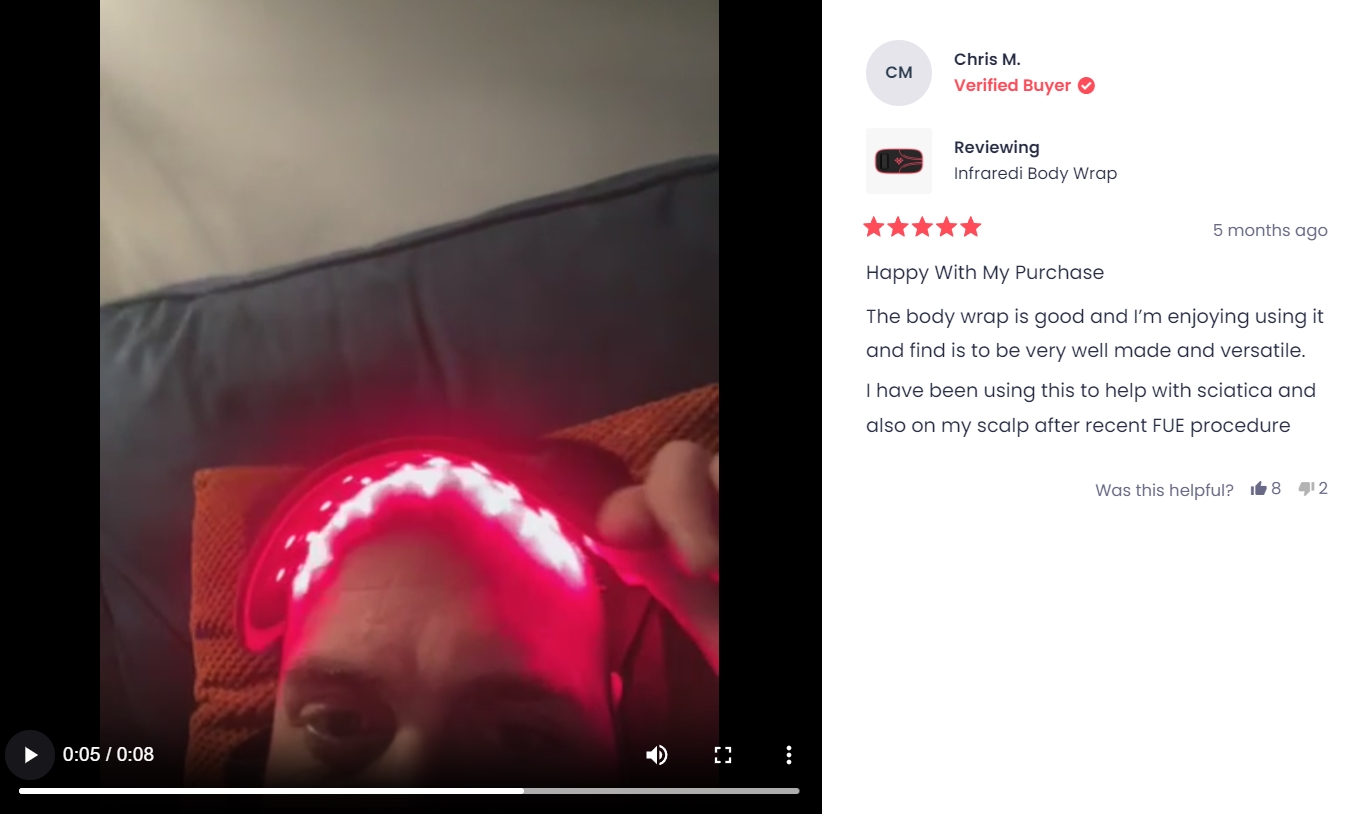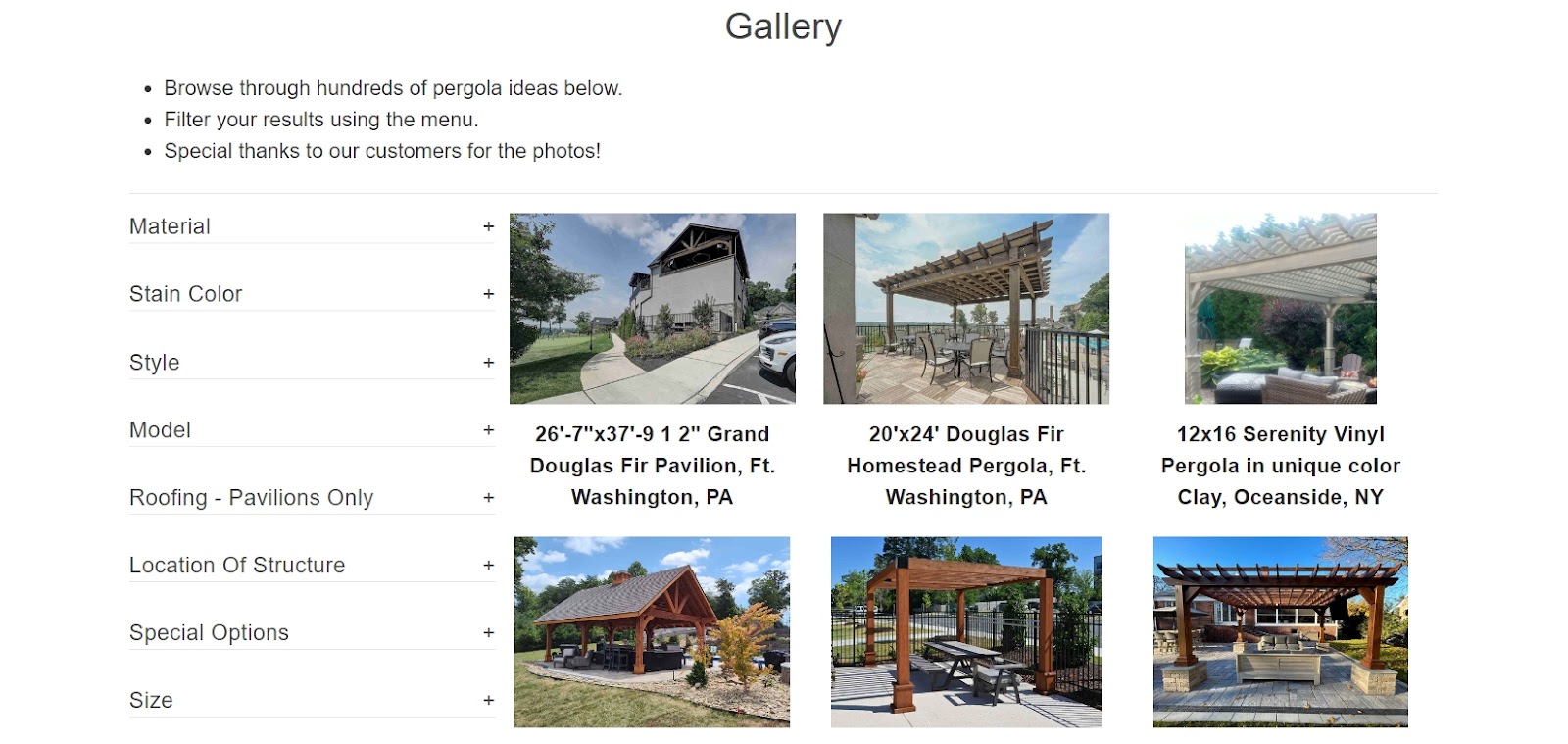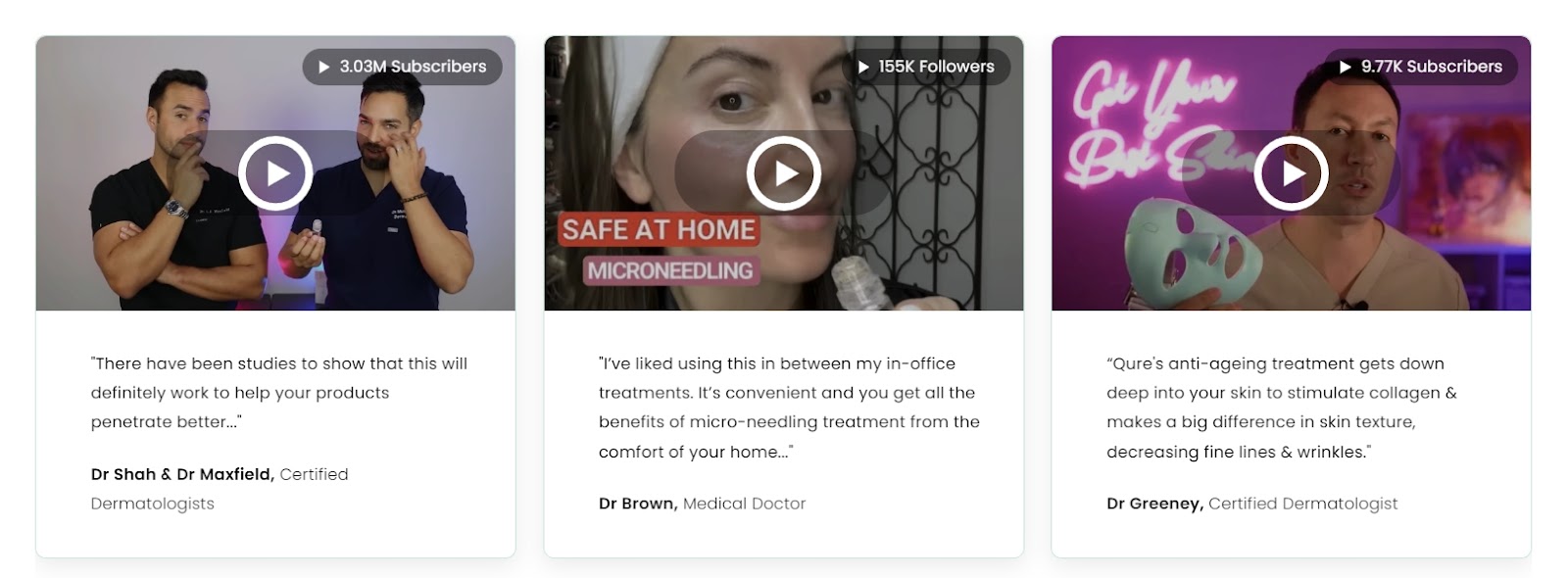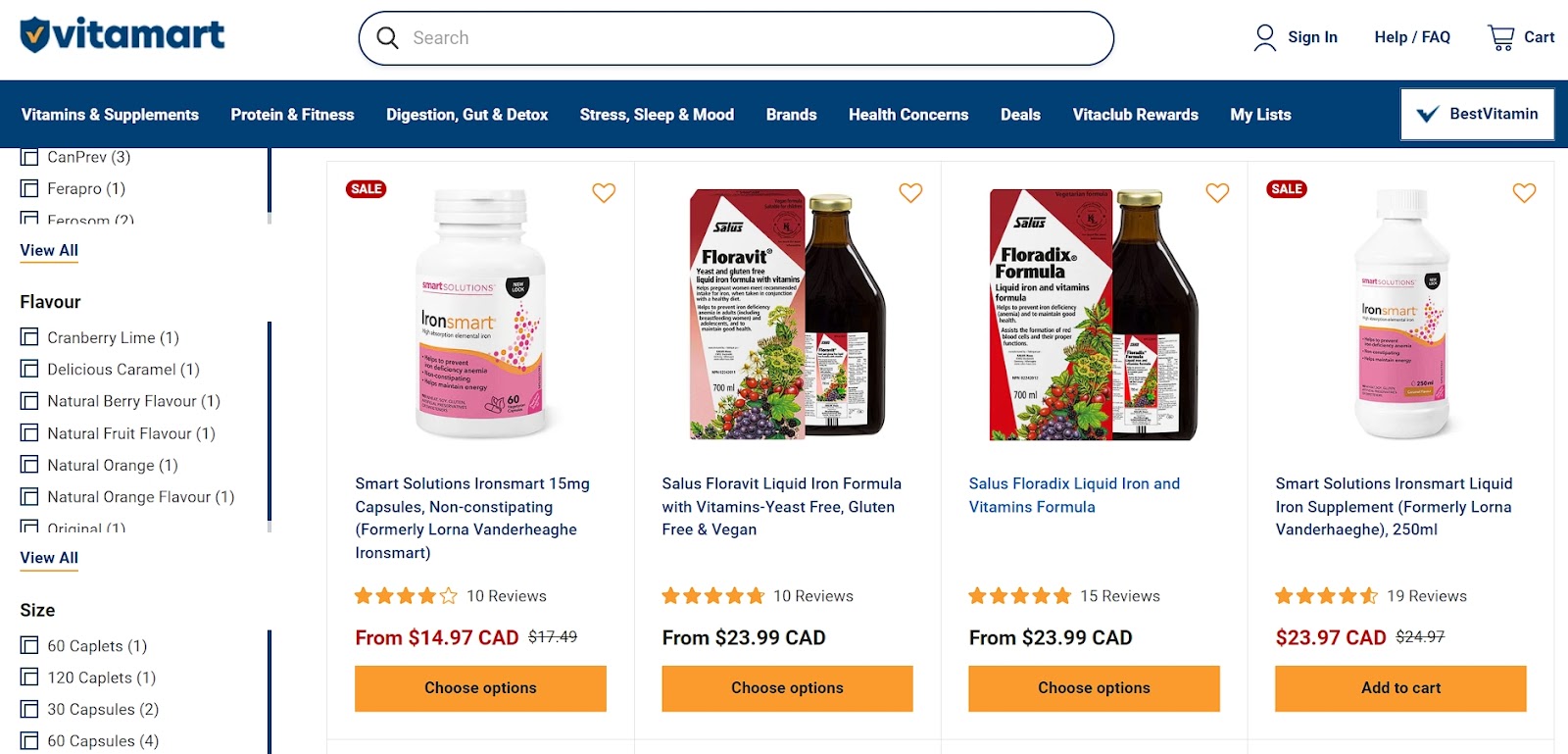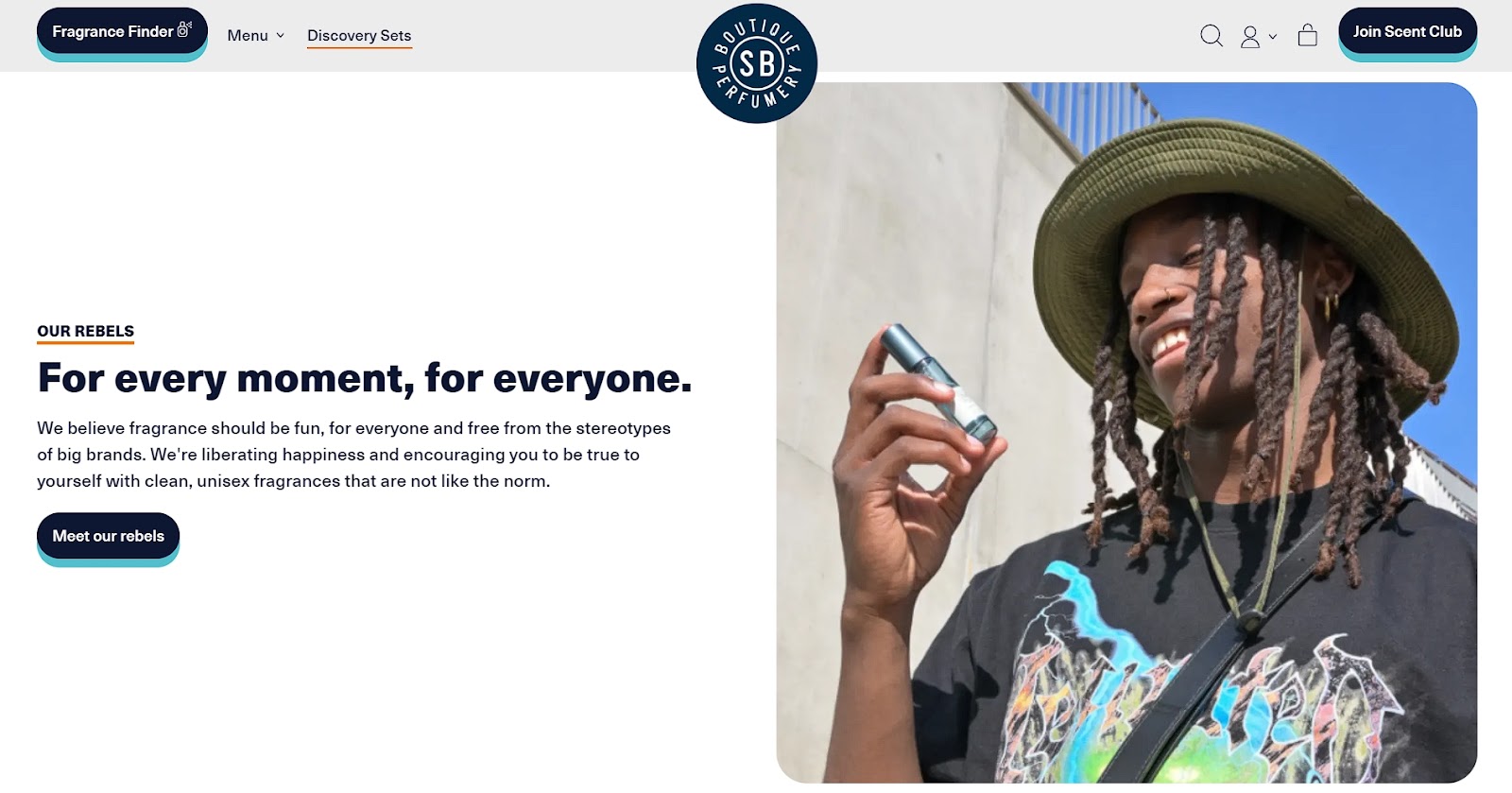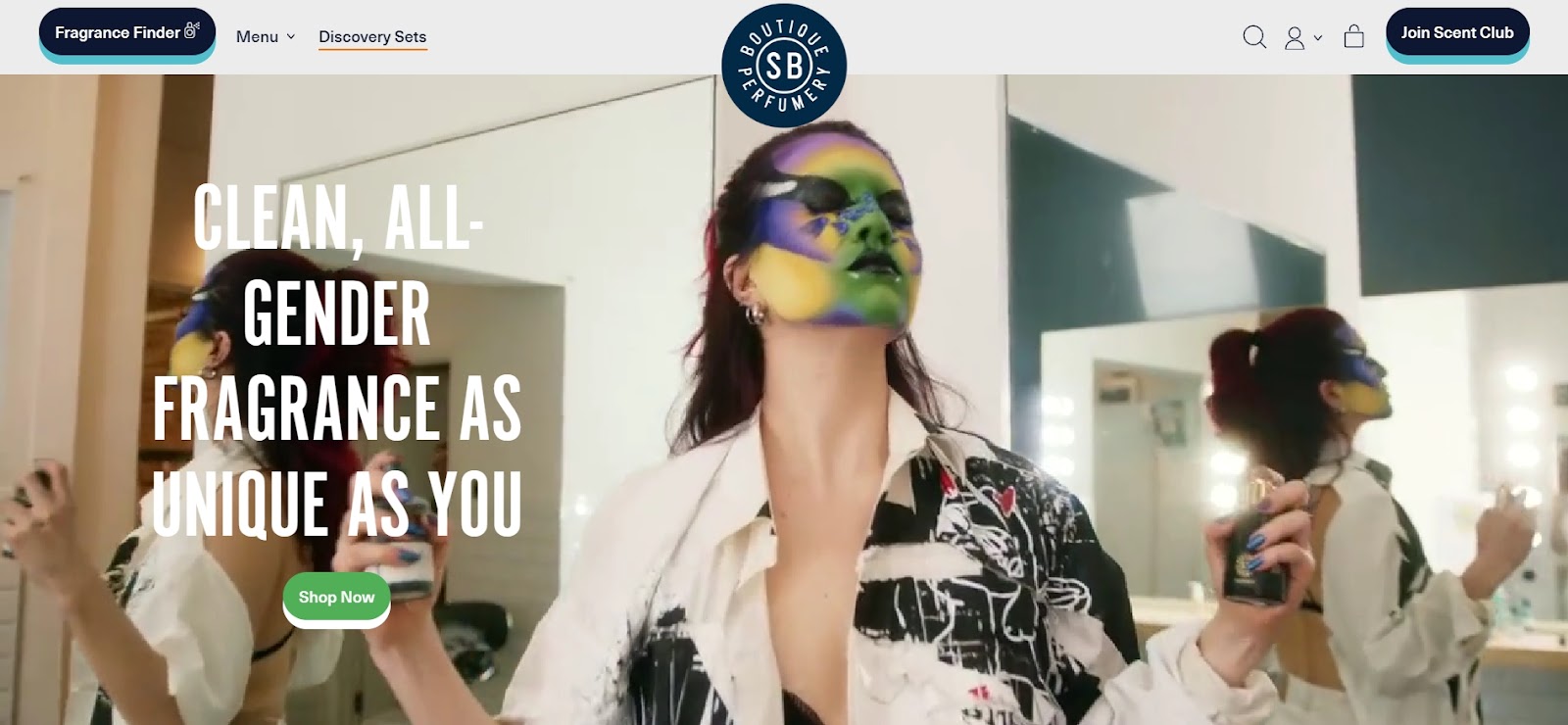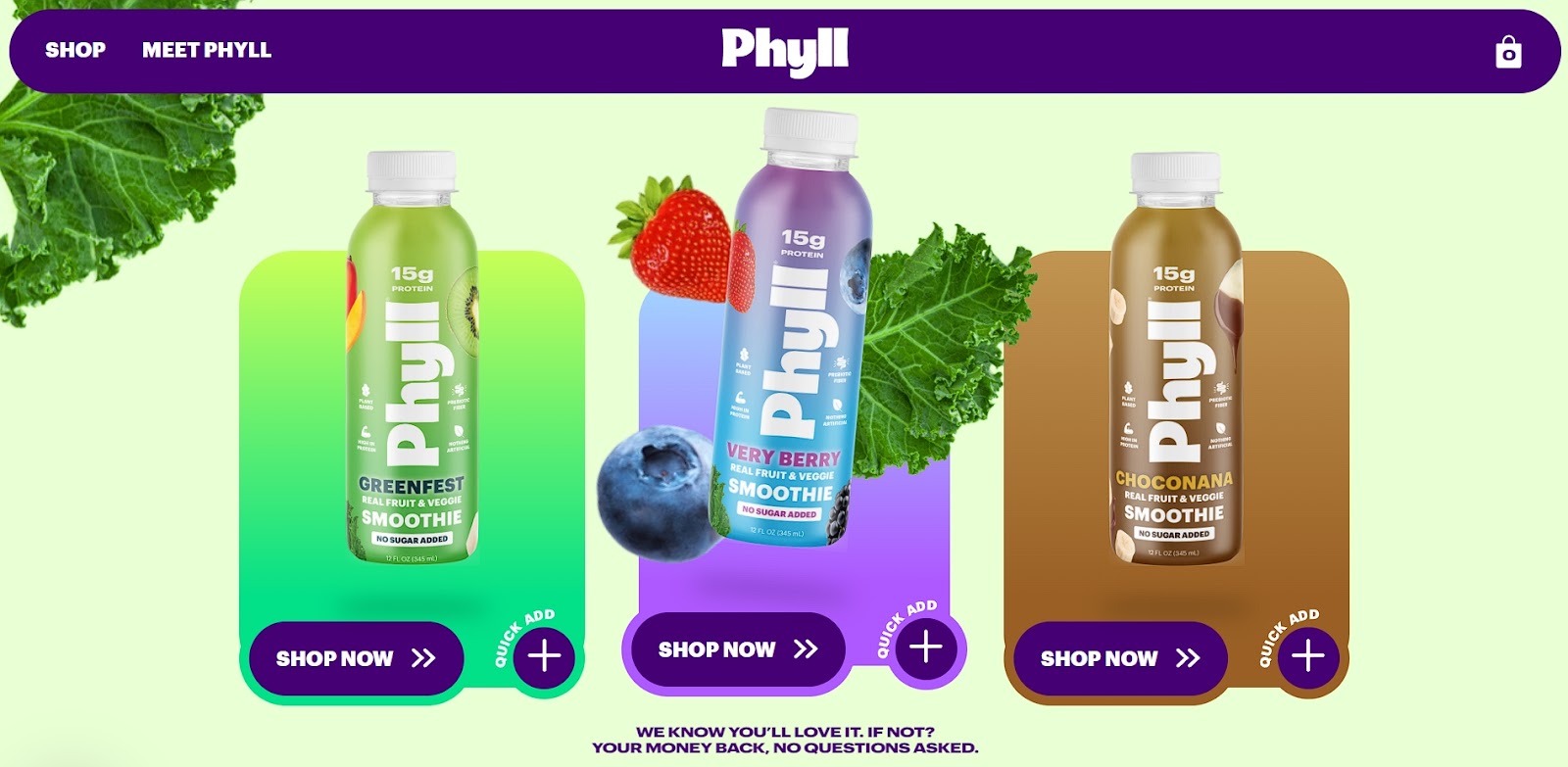We know the digital landscape can be tricky to navigate. Sometimes, reaching customers feels like aiming for a moving target. But there are proven strategies you can utilize to boost your bottom line.
With inbound marketing generating 54% more leads at less than half the cost of old-school tactics, traditional marketing just doesn’t cut it anymore. That’s why we’ll walk you through eight innovative B2C marketing principles that’ll help your brand boost sales and stand out from the crowd.
We’ll show you how to tap into this potential and make your marketing budget work smarter, not harder. We’ll cover everything from driving authority to leveraging customer reviews.
Let’s dig in!
1. Shoppers Want to See How People Use Your Products
Ever since online shopping made its boom, visual content has been leading the way. But not just any visual content – shoppers want to see real people using your products in real-life scenarios.
The reason behind this is simple: people trust real users more than polished marketing. That’s why user-generated content (UGC) is gold for your B2C strategy.
Even 81% of ecommerce markets say visual UGC packs more punch than pro shots or influencer posts. It’s because it’s authentic, relatable, and shows your product in action.
Here’s how to use visual UGC to your advantage:
- Make it easy for customers to share. Add clear calls-to-action (CTAs) on your site and in follow-up emails asking for photos or videos.
- Create a branded hashtag. Encourage customers to use it when posting about your products on social media, so you can easily find their posts to repurpose.
- Offer incentives. Run contests or give small rewards for the best UGC submissions.
- Showcase UGC prominently. Feature it on your product pages, homepage, and social media channels.
- Always get permission. Make sure you have the right to use customer content before posting it.
- Respond and engage. When customers share, show them some love with likes, comments, or shares.
Examples
Let’s take a look at two brands that have successfully harnessed the power of visual UGC.
First up is Infraredi, a company that sells red light therapy devices. They’ve hit the jackpot with their Infraredi Body Wrap product page. This page is loaded with customer review videos showing real people using the product at home.
These clips give potential buyers a genuine look at how the Body Wrap fits into everyday life. It’s like getting a sneak peek into a friend’s experience – way more convincing than a glossy ad.
Next, check out Pergola Kits USA, a brand that designs and sells DIY pergola and pavilion kits. They’ve taken UGC to the next level with a dedicated gallery page on their site.
This page is a showcase of customer-submitted photos featuring their pergolas in various settings. This approach not only shows off the product’s versatility but also sparks inspiration for potential buyers. They get to see various use cases and imagine how a pergola could enhance their own yard.
Both these examples prove that when you let your customers do the talking (or showing), you create trust, inspire new buyers, and turn your product pages into powerful selling tools.
2. Post-Sale Convenience Is a Priority
Many B2C brands fail to understand that the sale isn’t the finish line, but only the beginning of the customer relationship. Post-sale convenience can make or break repeat business. It’s all about making your customers’ lives easier after they decide to do business with you.
So, what does convenience look like?
- It’s smooth shipping that gets products to doorsteps fast.
- It’s hassle-free returns that don’t make customers jump through hoops.
- It’s responsive customer service that solves problems quickly.
When you nail these elements, your products come with peace of mind included. Here’s how to ace post-sale convenience:
- Offer multiple shipping options. Some shoppers want it “yesterday;” others are cool with waiting to save a buck.
- Make returns painless. Clear policies, prepaid labels, and quick refunds go a long way.
- Provide stellar customer support. Quick responses across multiple channels (email, chat, phone) show that you care.
- Send tracking info automatically. Keep customers in the loop about their order’s journey.
- Create helpful content. FAQs, how-to guides, and explainer videos can save customers (and your support team) precious time.
- Follow up post-purchase. A simple “How’s everything?” email can catch issues early and show you’re attentive.
For instance, let’s say you’re selling products that need assembly. Don’t let this scare off potential buyers. Create clear, detailed assembly guides or videos to show them that the process is a breeze, not a headache.
Examples
Here are two brands that are fantastic with their post-sale convenience approach.
Casper, a company selling mattresses and bedding, knocks it out of the park right on their homepage. They’ve got an entire section dedicated to convenience: a 10-year warranty (we’ll replace it with a new one), a 100-night risk-free trial (send it back for free), simple financing options (buy now, pay over time), and free, no-contact delivery (the shipping is on us).
This is how you sell a stress-free sleep experience from click to snooze.
Then there’s WholeWoodPlayhouses, specializing in wooden kids’ playhouses. They’ve tackled the assembly fear head-on with a YouTube video showing how to put together one of their playhouses.
The video is clear, easy to follow, and takes the mystery out of the process. Potential buyers can see what they’re in for and realize it’s not the DIY nightmare they might have feared.
These examples demonstrate that when you make life easy for your customers after the sale, you’re closing a deal and opening the door to loyal, happy customers who’ll sing your praises.
3. Shoppers Are Wary of “Miracle Cures”
With so much clickbait and exaggerated claims online, shoppers have become skeptical – and rightly so. This is especially true in health and finance, where the stakes are high.
Today’s savvy consumers aren’t looking for magic potions. They want products backed by solid science and credible accreditation. Here’s how to build trust and show you’re the real deal:
- Be transparent about your ingredients or methods. No hiding behind fancy jargon.
- Link to scientific studies that support your claims. Make them easy to find and understand.
- Get certified by respected industry bodies. Display those badges proudly.
- Partner with credible experts in your field. Their endorsement carries weight.
- Use clear, factual language. Avoid over-the-top promises.
- Share customer testimonials, but balance them with scientific evidence.
- Offer detailed FAQs addressing common concerns and misconceptions.
- If you’re in a regulated industry, make your compliance clear.
For health-related products, this could mean dermatological testing, clinical trials, or endorsements from reputable medical professionals. For financial products, similar principles apply. Use clear and honest communication, backed by certifications from recognized financial institutions or experts.
Example
Qure, a skincare company, is hitting all the right notes when it comes to building scientific credibility. Their homepage is a masterclass in showcasing medical backing. They prominently display information about their dermatologically tested products, complete with peer reviews from respected medical journals. They even got the badges to prove it.
But Qure doesn’t stop there. They feature a quote from a leading dermatologist vouching for their products. Having a trusted doctor giving you a personal recommendation always works.
To drive the point home, they’ve included videos of medical professionals testifying to the reliability and effectiveness of their products. It’s one thing to read claims, but seeing actual doctors talk about the science behind the products is powerful stuff.
By leaning heavily into scientific credibility, Qure shows they’re not a miracle cure preacher but true science backers. And that’s exactly what today’s skeptical early-stage prospects are looking for.
4. Positive Customer Reviews Are Gold
Customer reviews are the superheroes of the consumer industry. Nearly 95% of shoppers like to read them before they commit to a purchase.
Sharing positive customer reviews isn’t only nice to have but also influences how people decide what to buy. They’re the digital version of word-of-mouth and are quite powerful at how they work.
So, how do you harness this review magic? Simple: don’t hide them away on your product pages. Spread that goodwill everywhere! Here’s how to make reviews work harder for you:
- Don’t hide them away on your product pages. Spread that goodwill everywhere.
- Showcase reviews on your homepage. Let visitors see the love as soon as they land.
- Create a dedicated reviews page. Make it easy for potential customers to dive deep into feedback.
- Share reviews on social media. Turn happy customers into mini-influencers.
- Use review snippets in your ads. Real words from real people pack a punch.
- Encourage reviews on third-party sites. Think Google, Yelp, or industry-specific platforms.
- Add star ratings to category pages. Help shoppers make quick decisions.
- Seeing is believing, so include video reviews whenever possible.
- Respond to reviews – both good and bad. Show you’re listening and care.
- Use reviews in email marketing. Remind subscribers why people love you.
- Update reviews regularly. Fresh feedback keeps things current and trustworthy.
Examples
Now, we’ll check out three brands crushing it with reviews.
First up is Main Clinic Supply, a supplier of portable oxygen equipment that has turned reviews into a feature. They’ve got a dedicated “Reviews” page where customers can dive into feedback. They even made it interactive with filters and star ratings. It’s a real treasure trove of trust signals for potential buyers in the medical field.
Next, we’ve got Loop Earplugs, a noise-canceling earplugs brand. They take their reviews to Instagram, regularly sharing stellar feedback on their social media. But they’re not just copying and pasting. Instead, they create beautiful posts that integrate these reviews. It’s a smart move that boosts exposure and turns satisfied customers into social proof.
Last but not least, there’s Vitamart, a Canadian vitamins and supplements seller. They’re using reviews strategically on their collection pages.
Take their iron supplements page – it’s decked out with star ratings for each product. In one glance, shoppers can get an overall impression that all of Vitamart’s products are getting good reviews. It’s a subtle but effective way to build confidence in their entire range.
These brands show that when it comes to reviews, more is truly more. By plastering positive feedback across their sites, social media, and beyond, they’re literally selling trust. And in the crowded world of ecommerce, trust is the ultimate differentiator.
5. Shoppers Trust Recognizable Brands as References
Boosting your credibility can be as simple as riding the coattails of big-name brands. Get a few thumbs up from the cool kids, and suddenly everyone wants to know you.
This tactic is all about association. When shoppers see your brand linked with names they know and trust, it’s an instant credibility boost. But don’t just slap on an “as seen on” badge and call it a day. Quote directly from the publication and prominently display their logo on your site.
Here’s how to leverage your earned media:
- Actively seek out media coverage. Reach out to journalists and influencers in your niche.
- When you get mentioned, shout it from the rooftops. Feature it prominently on your site.
- Use direct quotes from publications. They pack more punch than a simple logo.
- Display logos of recognizable brands strategically on your homepage and product pages.
- Create a dedicated “Press” or “Media” page showcasing all your mentions.
- Share media coverage on your social media channels.
- Include mentions in your email marketing campaigns.
- Use quotes in your product descriptions or marketing materials.
- If possible, get testimonials from well-known figures in your industry.
Example
Escort Radar, a company specializing in radar detectors and dash cams, is playing the association game like a pro. They’ve created a carousel of standout quotes from heavyweight media outlets. We’re talking Forbes, CNET, Men’s Journal, Autoweek, and more of the big guns of tech and auto journalism.
But here’s where they level up: they don’t leave it at flashy quotes. They’ve linked each one to a dedicated page where curious customers can read the full articles.
Leveraging recognizable names is a smart move that turns media mentions into powerful sales tools. That’s how you make the most of your moment in the spotlight.
6. Consumers Buy with Their Hearts
Logic isn’t always in the driver’s seat when we’re shopping. More often than not, it’s our emotions that hit the gas. Smart marketers know this and use it to their advantage.
The key is tapping into the feels that make your customers tick. It’s not about manipulation but about creating a genuine emotional connection that resonates with your audience. Here’s how to make emotions work for your brand:
- Define your brand’s emotional core. What feelings do you want to evoke?
- Use storytelling in your marketing. People connect with narratives, not just facts.
- Choose imagery that reflects your emotional message.
- Craft copy that speaks to emotions. When describing features or benefits, use words that evoke feelings.
- Create video content that captures your brand’s emotional essence.
- Use colour psychology in your design to evoke specific emotions.
- Highlight the emotional benefits of your product, not just the practical ones.
- Encourage user-generated content that showcases emotional experiences with your brand.
- Personalize your marketing to make customers feel special and understood.
Example
Shay & Blue, which sells cruelty-free fragrances, is all about stirring up feelings of joy and freedom of expression. Their product imagery is a fantastic example of emotional marketing, capturing moments of carefree excitement. Through them, you can almost feel the energy jumping off the screen.
But the real star of the show is their homepage video. It’s a celebration of diversity and self-expression, featuring a range of personas living their best, most authentic lives. They showcase their product while effortlessly conveying the emotional payoff of using it.
By focusing on these positive, liberating emotions, Shay & Blue is appealing to our noses and speaking straight to our hearts. And in the world of fragrance, where the product is quite literally invisible, that emotional connection is everything.
Lastly, remember that when you tap into the right emotions, you enter the process of creating loyal fans. This can be one of the most exciting sides of modern marketing.
7. User Experience Should Match Customers’ Expectations
Let’s talk about the make-or-break factor in online shopping: user experience. It’s the digital version of a well-organized store with friendly staff.
Get it right, and you’ll have customers coming back for more. Get it wrong, and you might as well be showing them the exit. Here’s how to create a user experience that not only meets but exceeds expectations:
- Keep your site layout clean and intuitive. No one likes a digital maze.
- Make sure your site loads faster than a kid running to an ice cream truck.
- Use high-quality, zoomable product images. Let customers get up close and personal.
- Implement easy-to-use search and filter options. Help shoppers find what they want as soon as they want it.
- Create clear, compelling product descriptions. Don’t just list features, tell complete stories.
- Make your checkout process smooth and uncluttered.
- Ensure your site is mobile-friendly. More people shop on phones than you think.
- Use engaging micro-interactions. Little animations can make a big difference.
- Provide easily accessible customer support. Be there when your customers need you.
- Regularly test and optimize based on user feedback. Always be improving.
Example
Phyll, which makes all-natural smoothies, presents a website that’s as delightful as their drinks. They’re simply selling smoothies, but their marketing focuses on selling an experience. As soon as you land on their site, you’re greeted with smoothie offers that pop up in a fun, animated way. You feel like walking into a vibrant juice bar, but online. These eye-catching animations immediately showcase the smoothies’ mouthwatering taste and health perks.
But the magic doesn’t stop at pretty pictures. Phyll smartly placed CTAs that make purchasing a breeze. It’s a smooth journey from “Ooh, that looks good” to “Yes, I’ll take one, please.”
Creating a user experience that’s as fresh and lively as their products allows Phyll to go beyond meeting their customer’s expectations and blend up a whole new standard.
8. Everyone Is Drawn to Unique Experiences
Nobody likes to feel like just another face in the crowd. That’s why personalized experiences are a staple of successful B2C marketing.
Giving each customer their own VIP pass to your brand is what makes them lifelong admirers. It’s even proven that 72% of consumers feel more drawn to messages tailored to their
interests.
Here’s how to roll out the red carpet for every visitor:
- Use smart forms to gather key info about your customers.
- Implement AI-powered product recommendations.
- Create personalized email campaigns based on browsing history.
- Offer custom quizzes to guide shoppers to the right products.
- Use geolocation to tailor content and offers.
- Personalize your site’s homepage based on previous visits.
- Send targeted push notifications on mobile.
- Create loyalty programs with personalized rewards.
- Use chatbots for customized customer service.
While you’re on it, make sure to be of real help to your customers and not come off as creepy. The goal is to make your audience feel understood and valued.
Example
Enfamil, a company that provides baby nutrition solutions, is turning personalization into a parent’s best friend. While selling their recognizable baby formula, they’re offering a tailored journey through parenthood.
Here’s their clever move: they ask visitors for their baby’s due date or birth date. It sounds simple, but it’s actually genius. With this info, they can serve up personalized updates about pregnancy and baby development. We’re talking about custom insights, tips, and advice that grow with your little one.
However, along the way, they snag the user’s email. Now they’ve got a direct line to send more personalized goodies and well-timed product offers.
By making each parent feel like they’ve got a personal baby guru, Enfamil works on building healthy relationships. In the world of parenting, where every baby is unique, that personal touch makes all the difference.
So, follow this brand’s answer to mass-produced experiences and let personalization be your ticket to standing out.
Final Thoughts
Those were our eight game-changing principles to boost your B2C marketing. From leveraging user-generated content to creating personalized experiences, these tactics are the key to standing out in a crowded market.
But keep in mind that knowledge without action is just trivia. So, take the next step right now. Pick a strategy that resonates with your brand and implement it today. Start small, test, and refine.
The digital landscape is always evolving, and so should your marketing. Keep experimenting but stay customer-focused, and your sales metrics will reflect the effort.

